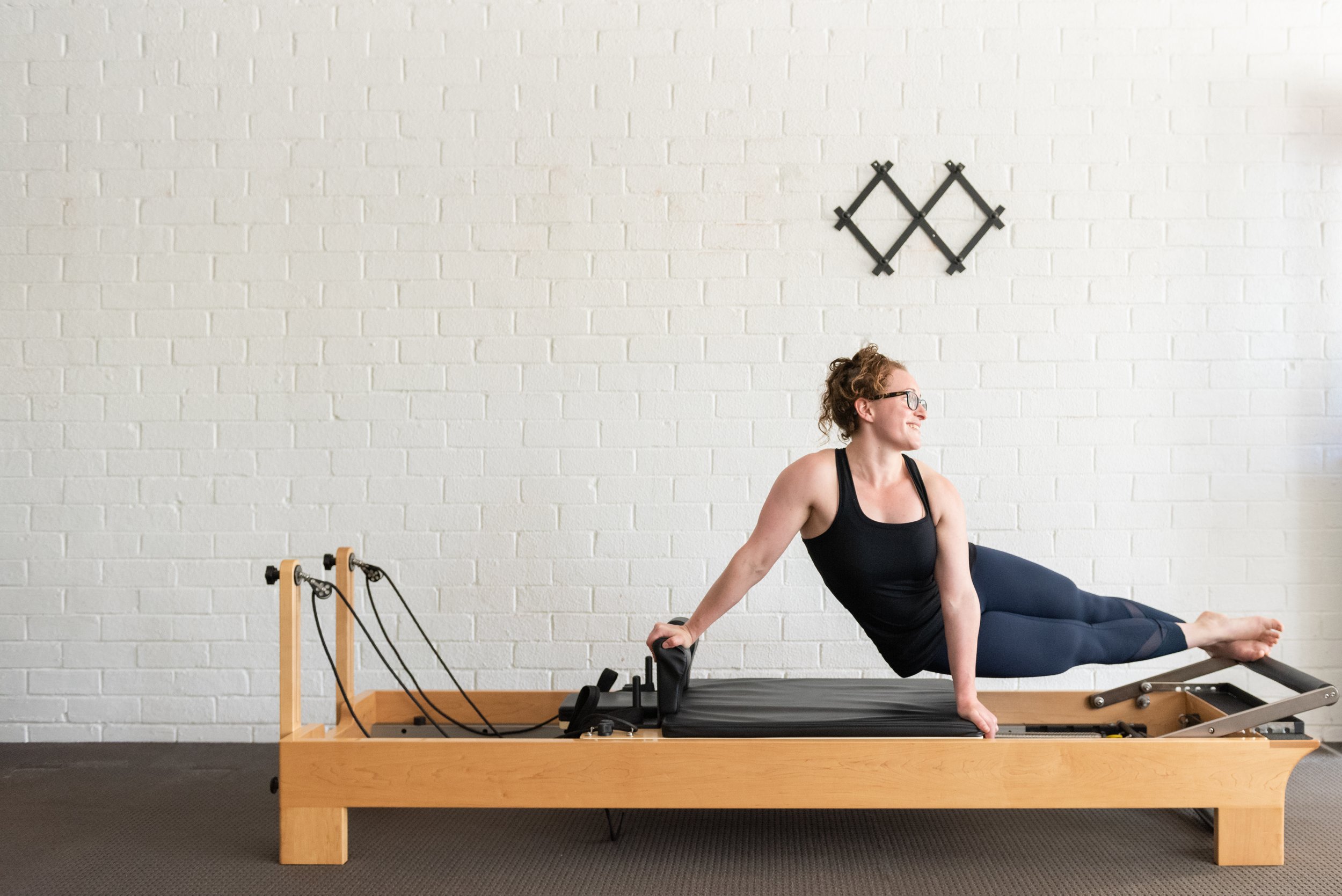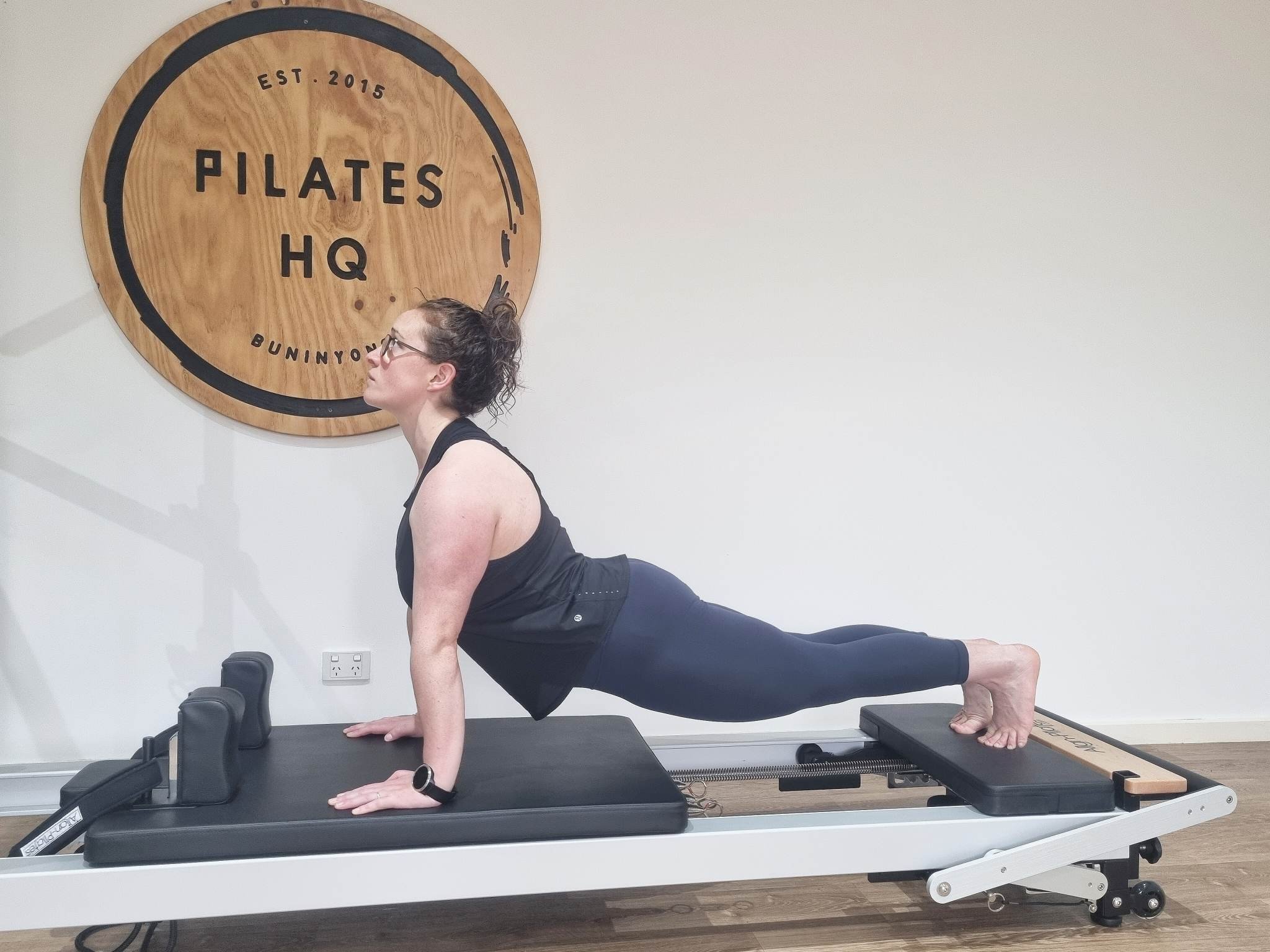Building your clients up to advanced exercises
When I completed my teacher training, I felt that there was a missing piece to the Reformer Pilates classes I was teaching and experiencing myself. I didn’t want to just keep teaching the same exercises week after week - Footwork, Feet in Straps, Arms in Straps, the list goes on. I had a sense that this approach wouldn’t keep my clients engaged, challenged or allow them room for improvement.
This sparked my desire to expand my knowledge in both Pilates and exercise. After years of attending courses and working with mentors, my eyes were opened to the more traditional and advanced repertoire. This allowed me to realise that I wanted to help build my clients up to these more advanced exercises. In my view, if I and so many other Pilates teachers can perform them, with enough training and repetition, then why couldn’t my clients?
Over the years I’ve realised that understanding and breaking down complex Pilates exercises can be highly beneficial and add a new level of depth to your teaching approach. When we’re able to break down complex moves we can then identify specific movements and components and can simplify the exercise for clients of different abilities.
And while this concept sounds easy, admittedly I felt a little overwhelmed at first. I was concerned my clients would not be able to comprehend my cueing of the advanced exercise and I would struggle to guide them in progressing from their current Pilates level. But I soon realised I was approaching this all wrong; by attempting to make a giant leap in their skill level in one go, when instead I needed to give them a toolkit to help them achieve the task. This was a three-step process:
1. Break the advanced exercise down into components (in turn making it less complex)
2. Understand the elements required to perform the advanced exercise, including what strength, mobility and or skills they needed.
3. Use key principles to regress the advanced exercises and work my way backwards from where I want to take my clients to where they are now.
Throughout this process, I discovered that incorporating these new exercises not only added an element of fun to my classes, but also allowed me to cater to clients at different ability levels. A skill that I now teach to other Reformer Pilates teachers.
I want to share with you some of the strategies I use to break down complex exercises into simpler components so that you too can start to incorporate this into your teaching.
Let's take the Advanced Reformer exercise Snake as an example. Often considered quite a challenging exercise.
When I analyse an exercise I do it in three steps:
1. Examining the start position of the exercise
2. Identifying the middle position/s of the exercise
3. Assessing the end position of the exercise (which is often the same as the start)
For each position, it's important to take note of the position of the lower body, upper body and spine and make observations based on your findings.
Step 1 – Snake Start Position - in simple terms the
Upper body - involves weight-bearing on the hands with straight arms,
Spine - is rounded and slightly rotated, the
Lower body – involves standing on one leg (with some rotation)
The Snake start Position therefore resembles a pike or an elephant on one leg, with some rotation
Step 2. Snake Middle Position (put simply)
When analysing the middle position/s of an exercise, I observe where we go after the start position. In this case the
Upper body - the arms remain straight,
Spine – moves through neutral and into extension whilst in rotation
Lower body - while the legs straighten out and move from hip flexion to some extension still on one leg.
In essence, we end up in a plank position on one leg, with a combination of spine extension and rotation.
Step 3. The Final Position
We move back to our start position.
Once we have identified the start and middle positions of the Snake exercise, we can see that the initial movements of Snake involve a pike to a plank on one leg with some spinal extension and rotation.
To simplify this complex movement for our clients, we can consider removing some of the components identified above and/or applying a regression principle.
To reduce complexity, we can remove the rotation element by positioning their hands and feet more square to each other, resulting in a single-leg pike to plank with extension. Another option is to eliminate the extension element of the plank (and rotation, if preferred), resulting in a single-leg pike to plank.
To regress the exercise we can increase the base of support or stability. There are various ways to achieve this, such as:
- Using two feet instead of one, resulting in a Pike to Plank movement with or without extension and rotation
- Placing the feet on a platform or the floor for more surface area increasing the base of support and stability
- Lowering down onto the knees, with the knees on a platform or box, and performing a kneeling pike-to-plank movement with or without extension and rotation.
Throughout this process above we aim to gradually simplify the exercise by making small adjustments each time.
By breaking down Snake as we have above we can identify some of the main skills and movements that are essential in helping our clients perform the exercise. This includes bearing weight on their hands, holding a plank position against gravity, executing a pike to plank or elephant, weight-bearing on one leg, extending and rotating the spine under load, balance, and more.
For me personally, it has helped me find purpose in my teaching, has allowed me to connect the dots between the repertoire and help me progress both my clients and other teachers towards some of the more advanced repertoire.
Stephanie Neal is a physio, Pilates teacher and owner of Pilates HQ. Steph helps Pilates teachers simplify their class planning and breakdown advanced exercises so that they can confidently teach multi-level classes that their clients love. Steph is the Founder of PILATES HQ & Pilates HQ Toolbox. An online community and class planning app providing an effortless way for Pilates teachers to find inspiration for and add variety to, their Pilates classes.
Featuring an extensive library of Exercise Clusters, exercise regressions and on-demand reformer classes, the Toolbox will provide you with support & community and will take your teaching to the next level.




